#Dimension 1875
Explore tagged Tumblr posts
Text
4 notes
·
View notes
Text

The Birth of Venus
I’ve started making posts where I dive into certain artistic depictions of Lady Aphrodite. Many are technically Lady Venus but they’re generally depicted the same. I’ve created one on The Birth of Venus by Botticelli already, and an anonymous person requested The Birth of Venus by Cabanel, so here you go!
Alexandre Cabanel
Alexandre Cabanel was a French painter born on September 28, 1823, in Montpellier, France and died on January 23, 1889 in Paris. He tended to paint historical, classical, and religious subjects in the “academic style”. Cabanel was Napoleon III’s favored painter.
Description of the Painting
The Goddess Venus, depicted as pale with long, orange hair, lays on the waves, looking to be asleep or just waking up. Above her, the Erotes, winged babies, blow on seashells and watch over her.
About the Painting
The birth of Venus was painted in 1863 using oil on canvas. Its dimensions are 150 cm × 250 cm (59 in × 98 in), and it is displayed in the Musée d'Orsay, Paris. Two smaller versions from 1864 and 1875 are on display in the Dahesh Museum of Art and the Metropolitan Museum of Art. When painted, this artwork was immediately purchased by Napoleon III for his personal collection.
#beautyofaphrodite speaks#beautyofaphrodite shrine#helpol#aphrodite#hellenic community#hellenic deities#hellenic gods#hellenic pagan#hellenic polytheism#hellenic polythiest#hellenic worship#aphrodite greek mythology#aphrodite altar#aphrodite goddess of love and beauty#aphrodite worship#aphrodite deity#aphrodite art#lady aphrodite#aphrodite goddess#aphrodite devotion#aphrodite devotee#aphrodite offerings#venus#venus goddess#lady venus#art#the birth of venus#alexandre cabanel#hellenic paganism#hellenic polytheistic
107 notes
·
View notes
Text

Liberty Leading the People (1830) 🎨 Eugene Delacroix 🏛️ The Louvre 📍 Paris, France
Perhaps Delacroix’s most influential and most recognizable paintings, Liberty Leading the People was created to commemorate the July Revolution of 1830, which removed Charles X of France from power. Delacroix wrote in a letter to his brother that a bad mood that had been hold of him was lifting due to the painting on which he was embarking (the Liberty painting), and that if he could not fight for his country then at least he would paint for it. The French government bought the painting in 1831, with plans to hang it in the room of the new king Louis-Philippe, but it was soon taken down for its revolutionary content. Lady Liberty was eventually the model for the Statue of Liberty, which was given to the United States 50 years later, and has also been featured on the French banknote.
Peint de septembre à décembre 1830 dans l'atelier loué par Eugène Delacroix au 15 (actuel n°17 ?) quai Voltaire, à Paris ; envisagé pour la deuxième Exposition au profit des blessés de Juillet 1830, galerie de la Chambre des Pairs (palais du Luxembourg), Paris, janvier 1831 (n° 508 du livret sous le titre "Une Barricade"), en réalité non prêté ; admis par le jury le 13 avril 1831 et exposé au Salon de 1831 (ouvert du 1er mai au 15 août), Paris, Musée royal (Louvre), n° 511 du livret sous le titre "Le 28 juillet. La liberté guidant le peuple" (n° 1380 du registre d'entrée des ouvrages au Salon, sous le titre "La Liberté guidant le peuple au 29 juillet" [sic], aux dimensions de "293 x 358 cm" cadre compris) ; envisagé comme achat de la Liste civile du roi Louis-Philippe Ier, en juillet 1831, au prix de 2 000 francs, finalement acheté à l'artiste par le ministère du Commerce et des Travaux publics en août 1831, au prix de 3 000 francs (en remplacement de la commande à Delacroix, au même prix, d'un tableau d'histoire ayant pour sujet "Le roi Louis-Philippe Ier visitant la chaumière où il logea près de Valmy, le 8 juin 1831", annulée suite au désistement de Delacroix) ; présenté au musée du Luxembourg, Paris, en 1832 et en 1833 (n° 160 du supplément au catalogue du musée) ; mis en réserve vers 1833-1834 ; confié à l'artiste vers 1839 qui le met en dépôt au domicile de sa tante, Félicité Riesener, et de son cousin Léon Riesener, à Frépillon (Val-d'Oise) ; réclamé à l'artiste par la direction des Musées nationaux (ministère de l'Intérieur) en mars 1848 (Delacroix demande à cette occasion une augmentation du prix de 7 000 francs, soit un total de 10 000 francs ; cette augmentation lui est refusée) ; prêté par Delacroix au peintre et entrepreneur lyonnais Alphonse Jame entre mai 1848 et mars 1849, en vue d'être exposé à Lyon, contre 1000 francs (payés en deux versements de 500 francs, le 11 septembre 1849 et le 8 mars 1850) ; rentré à Paris et restitué à l'administration en mars 1849 ; possiblement présenté au musée du Luxembourg, Paris, à partir de juin 1849 jusqu'en 1850 (mais absent du catalogue du musée) ; mis en réserve dans les magasins du musée du Louvre de 1850 à 1855 ; présenté à l'Exposition universelle, Palais de l'Industrie et des Beaux-arts, Paris, 1855, n° 2926 du livret ; mis en réserve dans les magasins des Musées impériaux de 1856 à 1863 ; présenté au musée du Luxembourg, Paris, de 1863 à 1874 ; déplacé du musée du Luxembourg au musée du Louvre en novembre 1874 ; inventorié pour la première fois, sous le n° "R.F. 129", en 1875 et présenté à partir de cette date dans la salle des États au musée du Louvre ; mis en sécurité pendant la Première Guerre mondiale au couvent des Jacobins, à Toulouse (Haute-Garonne) de 1914 à 1918 ; restauré par Lucien Aubert (nettoyage et réintégration de la couche picturale) à Paris en 1920 ; mis en sécurité pendant la Seconde Guerre mondiale au château de Chambord (Loir-et-Cher) en 1939, puis déplacé au château de Sourches, Saint-Symphorien (Sarthe), le 29 septembre 1943 ; rentré du château de Sourches au musée du Louvre, Paris, le 16 juin 1945 ; restauré par Raymond Lepage et Paul Maridat (rentoilage) et par Georges Zezzos (allègement et réintégration de la couche picturale), au musée du Louvre durant l'été 1949 ; présenté au musée du Louvre dans la salle Mollien d'octobre 1949 à 1969, puis en salle Daru de juin 1969 à juin 1994, puis en salle Mollien depuis décembre 1995 ; restauré par David Cueco et Claire Bergeaud (remplacement du châssis, pose de bandes de tension sur les bords de la toile) au musée du Louvre en janvier-février 1999 ; restauré par Bénédicte Trémolières et Laurence Mugniot (nettoyage et réintégration de la couche picturale) au musée du Louvre, d'octobre 2023 à avril 2024.
#Liberty Leading the People#Eugene Delacroix#Romanticism#1830#oil on canvas#painting#oil painting#The Louvre#Paris#France#Musée du Louvre#La Liberté guidant le peuple#french#art#artwork#art history
55 notes
·
View notes
Text
Grand Unified Theory of Dwampyverse Time Travel
OK, so that's a bit of an exaggeration. But I have figured out a few of the rules of time travel that seem to be consistent across this universe. (NOTE: I STILL have yet to watch Hamster and Gretel, so some of these rules may be broken there.)
Multiple timelines? Yes, they can exist.
Alternate selves from different timelines? Yes, they can exist too.
Alternate selves from the same timeline, at the same time and place? Yup.
After someone points out that a timeline should not exist? Nope. Everybody from that timeline immediately begins to pop out of existence one by one.
Time loops? Yes. Peaches, letters, phone calls, days, and even entire lives can be time loops.
Erasure from existence? Yup, that happens too. Although it's not necessarily permanent ;)
Existing outside the time loops? If you are a time traveler or otherwise protected from time waves, yes.
And two special cases that I've talked about before, but they bear repeating here:
The Time Traveler Bermuda Triangle. One famous (former) resident of Danville in 1875 was Xavier Onassis. Onassis was likely originally an employee of the B.O.T.T. (as were all the other residents there), but after getting stuck in 1875, he somehow managed to either fix up his time machine or create a new one. He used it in the spot where it currently sits in what is now the Danville Museum. He knew what corn dogs were when he talked to Future!Candace because corn dogs were invented somewhere around the 1920s-30s, long before he was born. Why he would stick around just for corn dogs is beyond me though.
Side note #1: I believe the reason why so many time travelers decided to stay in 1875 is because Mr. Block wasn't exactly the nicest boss ever.
Side note #2: If Danville was populated entirely by Sheriff Murphy and time travelers in 1875, that means everyone whose family lived there for the last few generations can quite literally trace their roots Back to the Future. This means that, by inventing time travel, Doofenshmirtz inadvertently created the entire city of Danville.
Now, I mentioned earlier that "lives can be time loops." This refers to a theory by the legendary Jonathan from Phineas Flynn's Law / The 2nd Dimension on YouTube. Basically, this theory states that Professor Timenshmirtz's entire life is a time loop. This explains how both of his parents failed to show up for his birth: because he was never born. He just showed up in the hospital one day as a baby and was picked up by the doctor. How did he get there? He would have had to have time traveled, that's for sure, but he also would have had to have been hit with his old Babe-inator. Why would he do this? Probably because of an accident, because no way would he do it on purpose!
That's all I could think of right now. But I'll make sure to update this post if and when I think of more!
20 notes
·
View notes
Text
After life (1875 words) by Luxie_Love_Sparkles Chapters: 1/1 Fandom: Yu-Gi-Oh! Duel Monsters (Anime & Manga) Rating: General Audiences Warnings: Creator Chose Not To Use Archive Warnings Relationships: Jounouchi Katsuya | Joey Wheeler & Kaiba Seto, Kaiba Mokuba & Kaiba Seto, Jounouchi Katsuya | Joey Wheeler & Kaiba Mokuba Characters: Jounouchi Katsuya | Joey Wheeler, Kaiba Seto, Kaiba Mokuba, Atem (mensioned) Additional Tags: Post-Canon, Post-Yu-Gi-Oh! The Dark Side of Dimensions, Returning Home, Return to reality
Summary:
After his departure for the after life, Kaiba figure now on the missing list, until Jounouchi find him on night on the road.
#ygo#fanfic#no a ship fic for now lol#I stare at it for 30 min and I'm unable to find tags#i'm sorry for that#mytext
10 notes
·
View notes
Photo
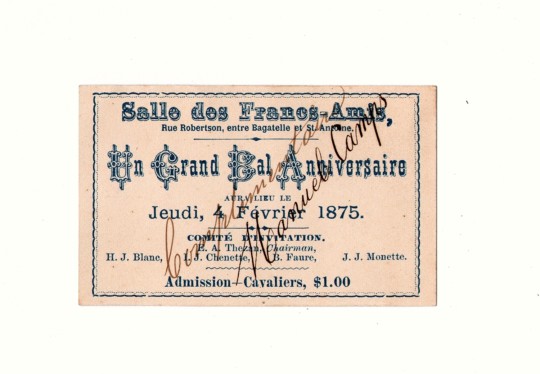
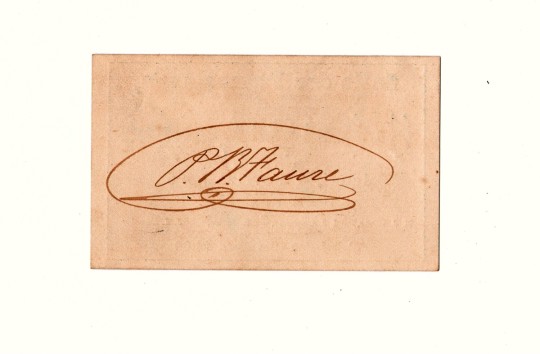
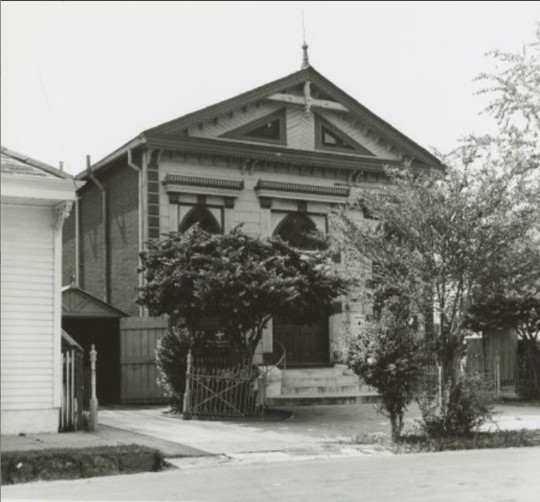

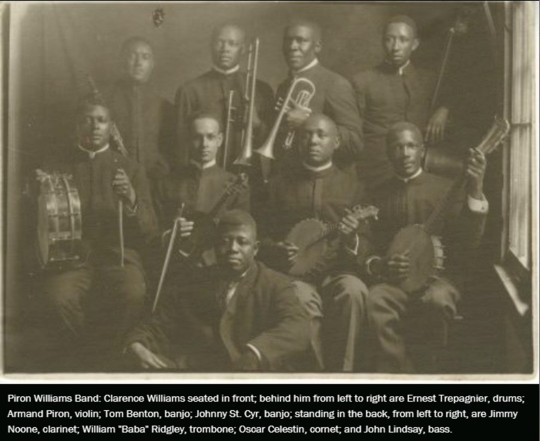
FRANC AMIS HALL / BALL INVITATION 1875
To say rare is an understatement , probably one of a kind , original Grand Ball invitation for Thursday, February 4, 1875 at the Francs Amis Hall on N. Robertson Street.
The FRANCS AMIS was a benevolent society and social dance hall probably the most important one formed by and for wealthy Creoles of color. La Société des Francs Amis (roughly, The Society of True Friends) bought this lot in 1861, and built the hall later in the 1800s (the gothic arched windows were probably early 20th century additions). Famed civil rights activist Homer Plessy, whose 1892 challenge to segregation laws in New Orleans resulted in the Supreme Court’s infamous “separate but equal” ruling of Plessy v Ferguson, was an officer of the society. Today, the Genesis Missionary Baptist Church worships in the building, which it has owned since 1963.
Jazz History Site / many great jazz bands played the Hall, Guitarist Johnny St. Cyr called it “a place of dignity” for downtown Creole society. It usually featured dance bands such as the John Robichaux Orchestra, the Superior Orchestra, and the Olympia Orchestra, but “hotter” uptown bands that included Pops Foster and Lee Collins reportedly played here as well. The club was popular with musicians, who earned $2.00 per engagement and ate and drank for free, according to Ricard Alexis, who played with Henry “Kid” Rena. “Wooden” Joe Nicholas, Hypolite Charles, and singer Lizzie Miles also performed here.
A hard to find piece of New Orleans, Creole of Colors, Civil Rights and Jazz History. The invitation has the name of MANUEL CAMP as a guest and the signature of J B FAURE one of the society members and part of the committee organizer of the ball.
Item No. E4983-119
Dimensions: 3.5″ x 2.25″
SOLD
#jazz history#jazz gems#jazz ephemera#ephemera#nola ephemera#francs amis#salle de francs amis#francs amis hall#creole of color#new orleans history#black creole#creoles of color#afro creole#black history#old new orleans
7 notes
·
View notes
Text

Les raboteurs de parquet Artist Gustave Caillebotte
Year 1875
Medium Oil on canvas
Dimensions 102 cm × 146.5 cm (40+1⁄8 in × 57+5⁄8 in)
Location Musée d'Orsay, Paris
15 notes
·
View notes
Text

New York, Mittwoch, 30. August 2023
Heute im Guggenheim-Museum, das mit seiner Architektur (Frank Lloyd Wright) fast mehr überzeugt als mit der zur Zeit ausgestellten Sammlungs-Auswahl, die sich auf Werke der Thannhauser Collection beschränkt, eine zwar feine, aber im Vergleich zu den andern namhaften Museen in New York kleine Präsentation von Bildern.

Die Rotunda wird dominiert von einer Sonderausstellung unter dem Titel Measuring Infinity zum Werk von Gertrud Goldschmidt (GEGO), einer im 1912 in Hamburg geborenen Künstlerin, die vor den Nazis nach Venezuela floh und in Caracas 1994 starb. Die fragilen, in die dritte Dimension ausgreifenden Werke faszinieren die Besucher, was sich allerdings auf mich nur beschränkt überträgt. Deshalb ein einziges Beispiel zur Dokumentation:
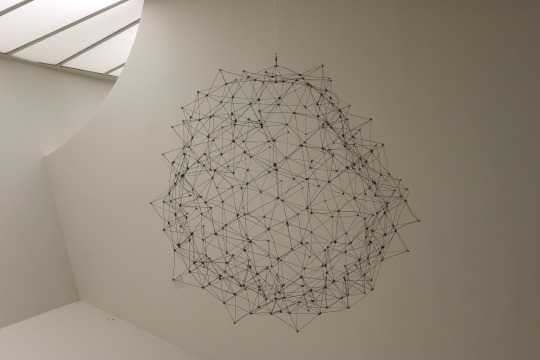
Dann gleich weiter zum Whitney Museum of American Art, das schon im ersten Sammlungsraum prominent und flamboyant seine Gründerin, Gertrude Vanderbilt Whitney (1875–1942) in Szene setzt, die selber Künstlerin war, sich aber auch als Sammlerin und Fördererin von Künstlern und Künstlerinnen verdient machte.
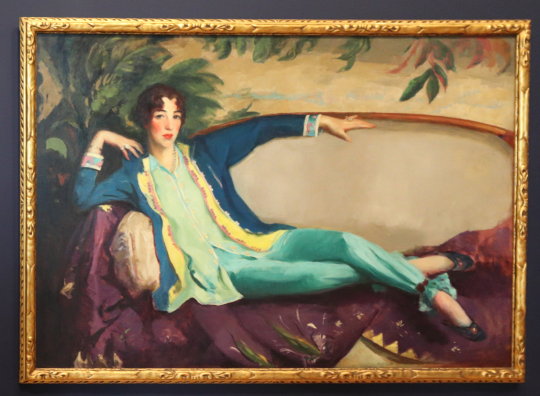
Das Whitney-Museum ist auf amerikanische Kunst des 20. und 21. Jahrhunderts spezialisiert. Zu seinen Aushängeschildern gehören Edward Hopper und Georgia O'Keeffe.
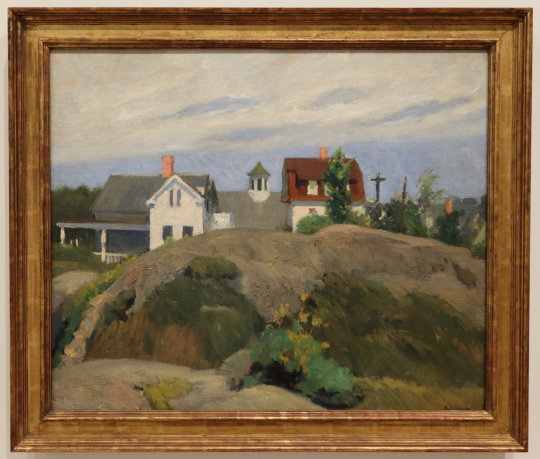
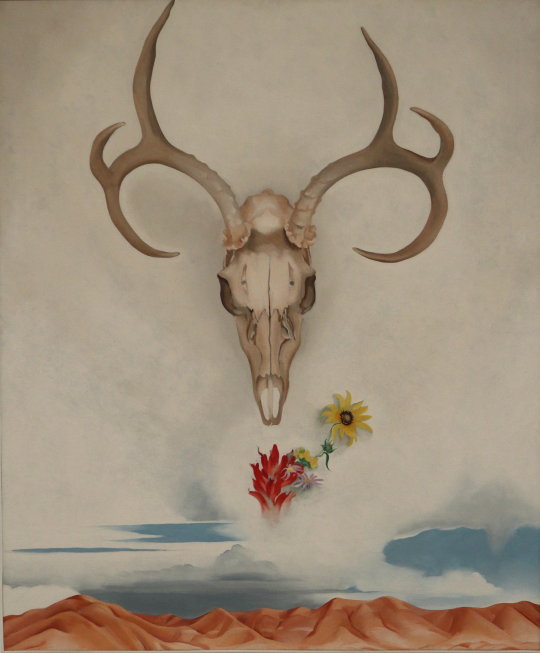
Aber auch Andy Warhol und Lee Krasner sind vertreten:
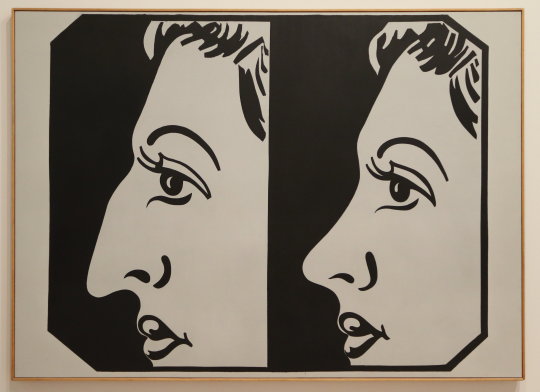
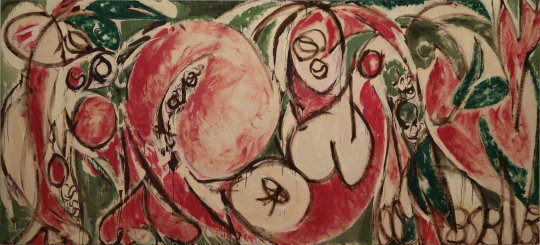
2 notes
·
View notes
Photo

The Book of Thoth The Book of Thoth: A Short Essay on the Tarot of the Egyptians, Being the Equinox Volume III No. V Paperback – June, 1974, Pub Date: June 01, 1981 by Aleister Crowley (Author), The Master Therion (Author), Frieda Harris (Illustrator) --Brand New-- Now a classic in the field, used by students of the Golden Dawn as well as by those who want to understand Crowley's tarot. This is the definitive study of the Egyptian tarot and is used as a key to all Western mystery disciplines. Color plates of eight cards. Originally published: London: Ordo Templi Orientis, 1944. About the Author Aleister Crowley (1875-1947) was the most widely read author in 20th-century occultism. He single-handedly redefined magic as a field of inquiry and endeavor through his books and the order that he led--the A.A. and the O.T.O. He is the author several books including The Book of the Law, 777 & Other Qabalistic Writings, and The Book of Thoth. Product details Paperback: 308 pages Publisher: Samuel Weiser, Inc.; New Ed edition (June 1974) Language: English ISBN-13: 9780877282686 Pub Date: June 01, 1981 Copyright Date: 1974 Product Dimensions: 6 x 0.8 x 9 inches Shipping Weight: 11.2 ounces
0 notes
Text
Who Was Rainer Maria Rilke?

Rainer Maria Rilke, born on December 4, 1875, in Prague, was a German-language poet and novelist whose work has had a profound influence on modern poetry and literature. Rilke is widely regarded as one of the most important poets of the 20th century, known for his deep exploration of existential themes, the human condition, and the spiritual dimensions of life. His poetry is often characterized by its lyrical intensity, rich imagery, and philosophical depth.
Early Life and Education
Rilke was born René Karl Wilhelm Johann Josef Maria Rilke in Prague, then part of the Austro-Hungarian Empire, into a family with a military background. His father, Josef Rilke, was an officer in the Austrian army, and his mother, Sophie Rilke, came from a wealthy Prague family. Rilke’s childhood was marked by the conflicting expectations of his parents. His mother, grieving the death of her first-born daughter, dressed Rilke in girls’ clothing for several years, which contributed to his sense of alienation and identity crisis.
Rilke’s early education was primarily in military academies, where he was expected to follow in his father’s footsteps. However, the rigid and disciplined environment of these institutions conflicted with his sensitive and artistic nature. He eventually left the military academy and pursued a more academic education, studying literature, art history, and philosophy at universities in Prague, Munich, and Berlin.
Literary Career and Major Works
Rilke’s literary career began in the late 1890s, and his early works were influenced by the Symbolist movement, which sought to express the inner experiences of the mind through metaphor and symbolism. His first notable collection of poetry, “Leben und Lieder” (Life and Songs), was published in 1894, but it was his later works that would establish his reputation as a major poet.
The Book of Hours
One of Rilke’s earliest major works is Das Stunden-Buch (The Book of Hours), written between 1899 and 1903. This collection of lyrical prayers is presented as the meditations of a monk on the nature of God, love, and the spiritual journey. The poems reflect Rilke’s evolving spiritual beliefs and his fascination with the divine and the mystical. The Book of Hours is often seen as a pivotal work in Rilke’s development as a poet, marking his transition from youthful romanticism to a more mature and introspective voice.
The Duino Elegies
Rilke’s most celebrated work is Die Duineser Elegien (The Duino Elegies), a series of ten elegies that he began writing in 1912 while staying at Duino Castle near Trieste, Italy. These poems, completed in 1922, are considered some of the most profound and complex in modern literature. The Duino Elegies explore themes of existential anxiety, the search for meaning, the relationship between the human and the divine, and the transient nature of life. The elegies are characterized by their soaring language, philosophical depth, and visionary quality.
The first elegy begins with the famous line, “Who, if I cried out, would hear me among the angels’ hierarchies?” This opening sets the tone for the entire work, expressing a sense of alienation and the struggle to find meaning in a world that seems indifferent to human suffering. The Duino Elegies are also notable for their exploration of the role of the poet as a mediator between the visible and invisible worlds, a theme that recurs throughout Rilke’s work.
The Sonnets to Orpheus
In 1922, the same year he completed the Duino Elegies, Rilke also wrote Die Sonette an Orpheus (The Sonnets to Orpheus). This collection of 55 sonnets was inspired by the death of Wera Knoop, a young dancer who had been a friend of Rilke. The sonnets are dedicated to the mythical figure of Orpheus, the poet and musician who could charm even the gods with his music. The Sonnets to Orpheus are celebrated for their lyrical beauty, their exploration of the relationship between art and life, and their meditation on death and immortality.
The sonnets reflect Rilke’s belief in the power of art to transcend the limitations of the human condition. In these poems, Orpheus becomes a symbol of the artist’s ability to create beauty and meaning in a world marked by suffering and loss. The Sonnets to Orpheus are also deeply personal, reflecting Rilke’s own struggles with illness and mortality.
Themes and Influence
Rilke’s poetry is characterized by its exploration of existential and metaphysical themes. His work often delves into the nature of existence, the search for meaning in a seemingly indifferent universe, and the relationship between the human and the divine. Rilke was deeply influenced by the existential philosophy of his time, particularly the works of Friedrich Nietzsche, whose ideas about the death of God and the emergence of the “Übermensch” (superman) resonated with Rilke’s own spiritual struggles.
The Human Condition
One of the central themes in Rilke’s work is the human condition, particularly the tension between the finite nature of human life and the desire for transcendence. Rilke’s poetry often reflects a sense of existential anxiety, as he grapples with the impermanence of life and the inevitability of death. This theme is particularly evident in the Duino Elegies, where Rilke explores the idea that human beings are caught between the earthly and the divine, striving for a sense of meaning in a world that is ultimately unknowable.
The Role of the Artist
Rilke also frequently explored the role of the artist in society. He saw the artist as a mediator between the visible and invisible worlds, someone who could reveal deeper truths through their work. In the Sonnets to Orpheus, Rilke portrays Orpheus as the ideal artist, whose music has the power to transcend the boundaries of life and death. This theme reflects Rilke’s belief in the transformative power of art and the artist’s responsibility to create beauty and meaning in the world.
The Search for the Divine
Another major theme in Rilke’s work is the search for the divine. Although Rilke rejected traditional religious beliefs, his poetry often reflects a deep spiritual longing and a fascination with the idea of God. In the Book of Hours, Rilke presents a vision of God as both immanent and transcendent, a presence that is both within and beyond the human experience. This theme is also evident in the Duino Elegies, where Rilke explores the idea of the divine as a source of both comfort and terror.
Rilke’s Legacy
Rainer Maria Rilke’s influence on modern literature and poetry is profound. His work has been translated into numerous languages and has inspired generations of poets, writers, and thinkers. Rilke’s exploration of existential themes, his lyrical mastery, and his philosophical depth have made him one of the most important and enduring voices in modern literature.
Influence on Modern Poetry
Rilke’s influence can be seen in the work of many modern poets, including W. H. Auden, T. S. Eliot, and Wallace Stevens. His exploration of existential and metaphysical themes resonated with the concerns of 20th-century poets, who were grappling with the aftermath of two world wars and the disillusionment of modernity. Rilke’s emphasis on the role of the artist as a mediator between the human and the divine also had a significant impact on the development of modernist poetry.
Rilke in Contemporary Culture
Rilke’s work continues to be relevant in contemporary culture, inspiring not only poets and writers but also artists, musicians, and filmmakers. His exploration of the human condition, his meditation on the nature of existence, and his search for the divine continue to resonate with audiences today. Rilke’s work is often cited in discussions of existential philosophy, and his ideas about the role of the artist and the power of art remain influential in contemporary thought.
Conclusion
Rainer Maria Rilke was a poet of extraordinary depth and vision, whose work continues to resonate with readers around the world. His exploration of existential and metaphysical themes, his lyrical mastery, and his philosophical insights have made him one of the most important and enduring voices in modern literature. Rilke’s legacy as a poet and thinker continues to influence and inspire, ensuring that his work will remain relevant for generations to come.
0 notes
Text
How Do I Spot a Fake Audemars Piguet Watch? A Comprehensive Guide
Audemars Piguet is one of the most prestigious watchmakers in the world, known for its quality craftsmanship and luxury timepieces. However, due to its popularity, many counterfeit watches flood the market, making it essential for buyers to know how to spot a fake Audemars Piguet watch. In this article, we will guide you through various methods to identify genuine Audemars Piguet timepieces and help you shop with confidence at Luxe Replica Watche.
1. Understanding the Brand
Before diving into the specifics of spotting a counterfeit, it's crucial to understand what makes Audemars Piguet unique. Founded in 1875, this Swiss watchmaker is renowned for its innovative designs and high-quality movements. The brand’s most famous model, the Royal Oak, revolutionized wristwatches with its distinctive octagonal bezel and integrated bracelet.
2. Examine the Watch Case
One of the first places to check for authenticity is the watch case. Genuine Audemars Piguet watches are made from high-grade stainless steel, gold, or platinum. Look for:
Weight: A real Audemars Piguet will feel substantial. If it feels too light, it may be a fake.
Finish: Authentic models have a fine brushed finish with polished edges. Counterfeits often have rough or inconsistent finishes.
3. Inspect the Dial
The dial of an Audemars Piguet watch is a work of art. Check for the following:
Logo: The Audemars Piguet logo should be perfectly aligned and crisp. Fakes often have misaligned or poorly printed logos.
Markers: Look for the hour markers. They should be precisely placed and not overlapping or misaligned.
Movement: The sweep of the second hand should be smooth. If it ticks, it’s likely a fake.
4. Check the Movement
The heart of an Audemars Piguet watch lies in its movement. If possible, have the watch opened by a professional to inspect its movement. Authentic Audemars Piguet watches use high-quality automatic movements, often adorned with intricate engravings. Look for:
Engravings: Genuine movements are finely engraved with the brand name and other details. Counterfeit watches often have poorly executed engravings.
Serial Number: Each genuine Audemars Piguet watch has a unique serial number located between the lugs. Verify this number with the brand's records.
5. Weight and Dimensions
Each Audemars Piguet watch has specific dimensions and weight. Check the model specifications on the official website or trusted sources. If the watch you’re examining feels lighter or is different in size, it’s likely a counterfeit.
6. Packaging and Documentation
Genuine Audemars Piguet watches come with high-quality packaging and documentation, including a warranty card and a user manual. Look for:
Box Quality: The box should be sturdy, well-made, and branded. Counterfeit packaging is often flimsy and poorly designed.
Documentation: Check for authenticity certificates and warranty cards. Fake watches may come with generic paperwork.
7. Purchase from Reputable Sources
One of the best ways to avoid buying a counterfeit is to purchase from reputable sources. If you're looking for luxury replicas, consider Luxe Replica Watche, which offers a wide selection of high-quality replica watches that closely resemble the originals. Always do your research and read reviews before making a purchase.
Conclusion
Spotting a fake Audemars Piguet watch may seem daunting, but with careful examination and knowledge of the brand's characteristics, you can make informed purchasing decisions. Always remember to verify the watch’s authenticity and buy from trusted sources like Luxe Replica Watche. By following these guidelines, you can enjoy the luxury of an Audemars Piguet timepiece without the fear of counterfeiting.
1 note
·
View note
Link
Check out this listing I just added to my Poshmark closet: GLEN AUBURN Bed & Breakfast Natchez Mississippi SHELIA'S SHELF SITTER PLAQUE 97'.
0 notes
Text
#FineArtFriday: revisiting Indian Summer by William Trost Richards 1875
Title: Indian Summer by William Trost Richards Genre: landscape art Date: 1875 Medium: oil on canvas Dimensions: 24 1/8 x 20 in. (61.3 x 50.8 cm) Collection: Metropolitan Museum of Art What I love about this painting: Autumn is upon us once again. I was looking through the vault at Wikimedia Commons, and my eye kept being drawn to this painting by William Trost Richards. I featured this painting…

View On WordPress
#American Landscape Art#Fine Art Friday#Indian Summer by William Trost Richards#Landscape paintings#William Trost Richards
1 note
·
View note
Text

Les fondements occidentaux du yoga
Le père Jean-Christophe Thibaut nous enseigne sur les dérives occidentales du New Age, de l'ésotérisme, du yoga, du magnétisme, de la divination, etc.
L’ésotérisme se fonde sur un vision du monde, de l’homme, de la divinité, inspirée des pensées païennes (philosophie néo-platonicienne, mythes antiques, etc.) et sur une “connaissance secrète” (tradition primordiale) transmise pas initiation aux initiés.
L’occultisme (et les pratiques occultes) est la mise en pratique de cette connaissance occulte (magie, divination, astrologie, spiritisme, etc.).
Dans les pratiques occultes, il y a la recherche de la guérison et du bien-être et/ou la connaissance et la divination.
On distingue trois grandes racines aux pratiques occultes : 1. le yoga, la place du corps et les états modifiés de consciences ; 2. le magnétisme et la notion d’énergie ; 3. la magie, la guérison, la divination.
1. Le Yoga
Jusqu’au XIXe siècle, en Occident, on ne connaissait pas les religions orientales. C’est la société de théosophie, issue du spiritisme, fondée par Helena Blavatsky (proche de la franc-maçonnerie) et le “colonel” Olcott, qui fondirent un syncrétisme amalgament l’ésotérisme occidental, le bouddhisme tibétain, l’hindouisme et autres, en 1875. Le but était de fonder une religion qui englobe toutes les religions.
En 1893, cette société de théosophie organise à Chicago le premier parlement mondial des religions [excusez du peu]. Un nommé Swami Vivekananda (1863-1902), Indien hindouiste formé dans les écoles protestantes britanniques, y fait plusieurs discours qui favoriseront la connaissance et la diffusion de l’hindouisme en Occident. Il y reçoit l’ovation de 7000 personnes.
Brièvement, le yoga indien est une voie religieuse dont le but ultime est de parvenir à l’illumination par la méditation. L’Éveil est un état d’union avec le “dieu” intérieur (âtman) ou d’absoption de l’âtman dans l’Absolu (le Brahman). La voie du yoga passe par différentes étapes dont la dernière est l’état de Samadhi durant laquelle l’esprit du yogi réalise la “réalité ultime”.
En 1924, Tiramulai Khrishnamacharya choisi le hata yoga (yoga de l’effort) pour être adapté aux attentes des Occidentaux en s’inspirant de la gymnastique suédoise et du culturisme. C’est lui qui donne aux postures [asanas] les noms poétiques de “salutation au soleil”, “la cigogne”, [“l’arbre”, “le guerrier”], etc.
“Dès que le yoga s’exporte, il est marketé pour les Occidentaux. On le rend plus physique, on [en] gomme les aspects religieux tout en lui donnant une patine traditionnelle, on en fait une source de bienfaits, voire une alternative à la médecine.” (Marie Kock, spécialiste de l’histoire du yoga)
À ce stade, le yoga est une gymnastique exotique, mais qui porte en épithète un terme religieux, comme on détournait des termes comme chapelet, oraison [ou rosaire – ndr] pour en faire autre chose [un art martial, par exemple – ndr].
À partir des années 1960, des gourous indiens viennent en Occident avec un enseignement plus traditionnel du yoga dans leurs bagages. La dimension physique (asana) cède la place à la méditation (dhyana) pour parvenir à un état d’éveil. Le yoga vise désormais une transformation spirituelle.
Le yoga est inspiré du tantrisme qui est une voie ésotérique hindouiste et bouddhiste. Le yoga enseigne que les exercices de souffle [prânâyâma] permettent d’ouvrir les chakras et de faire l’expérience de l’éveil de la kundalini. L’illumination recherchée est perçue comme un état de plénitude, de bien-être, tant physique que psychologique. Il s’agit en fait d’un état de transe, d’ouverture sur le “monde invisible”.
Le prânâyâma se présente comme une méthode qui permet au prânâ (“souffle spirituel universel” [associé par d’aucuns au pneuma]) de pénétrer et de purifier le corps et l’esprit. L’hyperventilation provoque un état modifié de conscience pouvant aller jusqu’à induire un état de transe.
“Le yoga conduit à un état de fusion cosmique, induisant des états modifiés de conscience similaires à ceux que l’on peut obtenir par la transe ou par des rites initiatiques. Rien d’étonnant dès lors que ceux qui pratiquent un certain temps le yoga ou autres techniques analogues, se découvrent dotés de pouvoirs préternaturels. […] Un état modifié de conscience provoqué par des techniques longuement éprouvées par des yogis, peut provoquer des phénomènes d’emprises démoniaques.” (Josèphe Verlinde, L’Expérience interdite)
Rem du rédacteur. : Josèphe Verlinde que le père Thibaut prononce “vers l’Inde”, ça s’invente pas ; le Belge dira “veur Line de”.
La méditation du yoga cherche à provoquer une enstase, une plongé en soi-même pour découvrir son moi profond que le père Thibaut nomme “dieu intérieur” [Michel Odoul écrit “maître intérieur” ; C. G. Jung parle de “soi” et, en parallèle avec le travail des alchimistes, une plongée dans l’inconscient pour sauver notre âme qui a besoin de rédemption].
La méditation chrétienne et la prière permettent une extase, une union (non une fusion), une communion d’amour avec un Dieu transcendant.
Selon le père Thibaut, le yoga est tourné vers soi, la prière est tournée vers une altérité et dans ce cas, le yoga empêche de s’ouvrir à une altérité, son accès nous devient impossible.
“Le souci de l’harmonie de l’homme avec son environnement est important, mais nous constatons qu’il devient progressivement un absolu, une aliénation qui nous empêche de porter tout notre effort sur le vrai enjeu de notre vie : l’accueil de la grâce divine au nom de Jésus-Christ. […]
Pour ceux qui pratiquent le yoga assidûment, il devient progressivement un ‘art théurgique’, à savoir une voie d’auto-divination [1]. L’incompatibilité avec le christianisme saute aux yeux : nous croyons certes que nous sommes appelés à participer à la vie divine (2 P 1, 4), mais par grâce, c’est-à-dire par l’action de l’Esprit-Saint, et non par nos propres efforts ou par immersion dans les énergies créées de ce monde.” (Josèphe Verlinde, L’Expérience interdite)
2. La magnétisme et l’énergie
(cf. vidéo)
3. la magie, la guérison, la divination.
(cf. vidéo)
‣ Chaîne Youtube « Dieu sauve », « Occultisme, ésotérisme et foi chrétienne, Père Thibaut, luciférien devenu prêtre Part2 », pub. 8 oct. 2023, https://www.youtube.com/watch?v=Tx-F7d9_JhQ (cons. 8 sept. 2024).
‣ Ill. : groupe FB « Santé partagée/Naturocoaching », https://www.facebook.com/photo/?fbid=458638719601024&set=pb.100063646984560.-2207520000 (cons. 9 sept. 2024)
—
[1] C’est bien ce dont C. G. Jung nous met en garde : ne pas identifier le soi au moi, ce qu’il nomme “inflation du moi”. Il évoque la fin tragique de Nietzsche à ce sujet dans son chapitre “Confrontation avec l’inconscient” de son autobiographie dictée à Aniela Jaffé : Ma vie.
#yoga#inde#hindouisme#new age#Josèphe Verlinde#ésotérisme#divination#magie#énergie#EMC#état modifié de conscience#magnétisme#guérison#jean-christophe thibaut
1 note
·
View note
Text





Title: Ensemble
Date: 1875–1925
Geography: Made in Palestine
Medium: Silk, cotton, wool, metal wrapped thread
Dimensions: [no dimensions available]
Classification: Main dress
Credit Line: Gift of Miss Irene Lewisohn and Mrs. Alice Lewisohn Crowley, 1939
Accession Number: C.I.39.91.14a–f
#The Metropolitan Museum of Art#The Met Costume Insitute#From Palestine#Palestine#Ensemble#1875 - 1925#Robe#Costume Design#Traditional Fashion
0 notes
